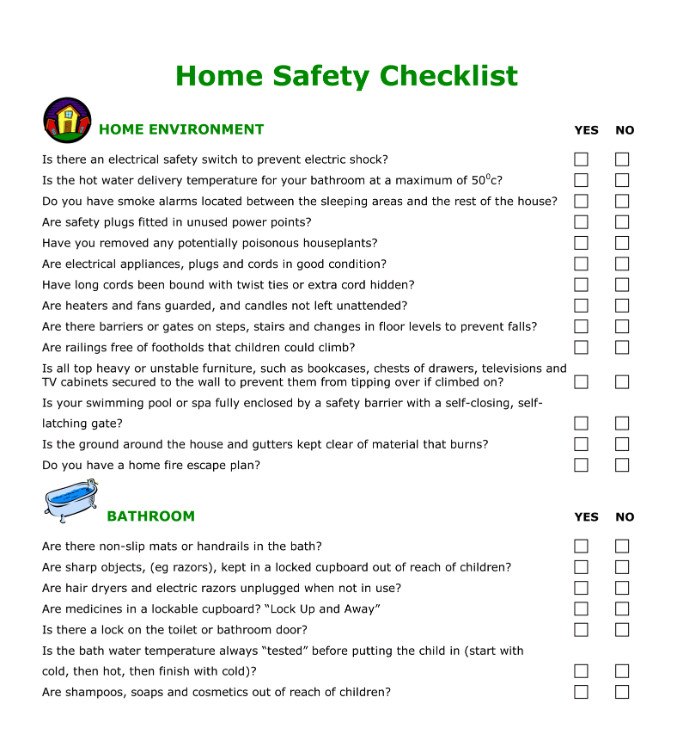
As a parent, the safety of your children is always a top priority. Whether you’re at home, on the road, or out in public, it’s important to be prepared and aware of potential risks. That’s why having a children’s safety checklist can be a lifesaver.
This comprehensive guide will provide you with all the information you need to create your checklist and ensure the safety of your little ones.
Why Should You Have a Children Safety Checklist?
A children’s safety checklist is a valuable tool that helps you stay organized and prepared for any situation. By having a checklist on hand, you can easily keep track of safety measures and ensure that you haven’t overlooked anything important. It serves as a reminder to regularly review and update safety precautions, making it easier to maintain a safe environment for your kids.
Additionally, a checklist can be shared with babysitters, family members, or anyone else who may be caring for your children. This ensures that everyone is on the same page when it comes to safety protocols and procedures, providing you with peace of mind when you’re not around.
What Should Be Included in a Children’s Safety Checklist?
A children’s safety checklist should cover a wide range of safety measures to address different scenarios and environments. Here are some key elements that should be included:
- Childproofing the Home. This section should cover safety precautions for different areas of the house, such as securing cabinets, covering electrical outlets, and installing safety gates.
- Safe Sleep Practices. Provide guidelines for creating a safe sleep environment, including placing babies on their backs to sleep and removing loose bedding.
- Safe Bathing and Toileting. Outline safety measures for bath time, such as never leaving a child unattended and ensuring water temperature is safe.
- Fire Safety. Include information on fire prevention, escape plans, and teaching children how to react in case of a fire.
- Water Safety. Discuss pool safety, water supervision, and the importance of swimming lessons.
- Stranger Danger. Educate children on how to stay safe around strangers and what to do if they feel uncomfortable or threatened.
- Internet Safety. Provide guidelines for safe internet use, including setting parental controls and teaching children about online privacy.
- Emergency Contacts. List important phone numbers, such as poison control, your pediatrician, and emergency services.
- First Aid and CPR. Include basic first-aid tips and information on how to perform CPR on children.
- Car Safety. Outline car seat guidelines, safe driving practices, and how to properly secure children in a vehicle.
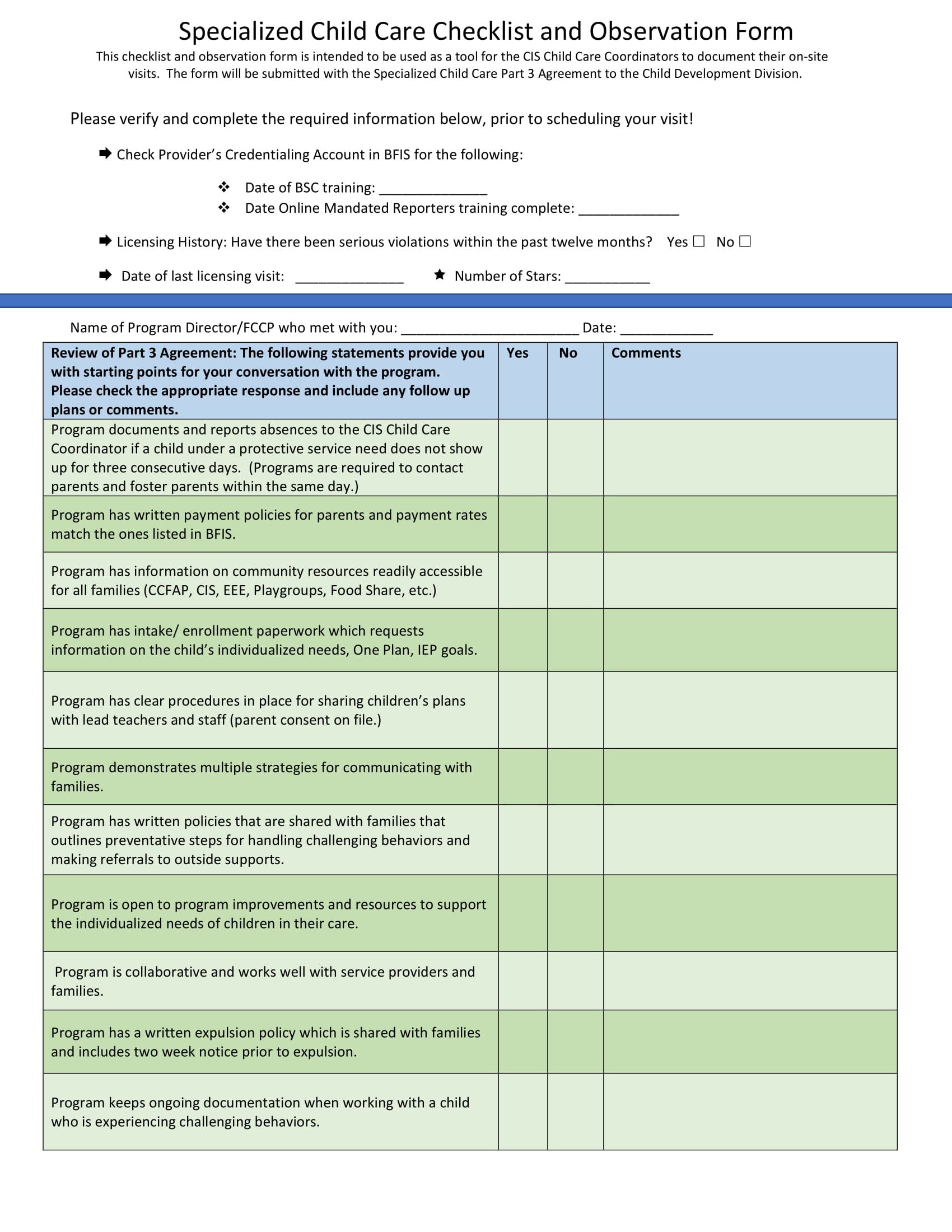
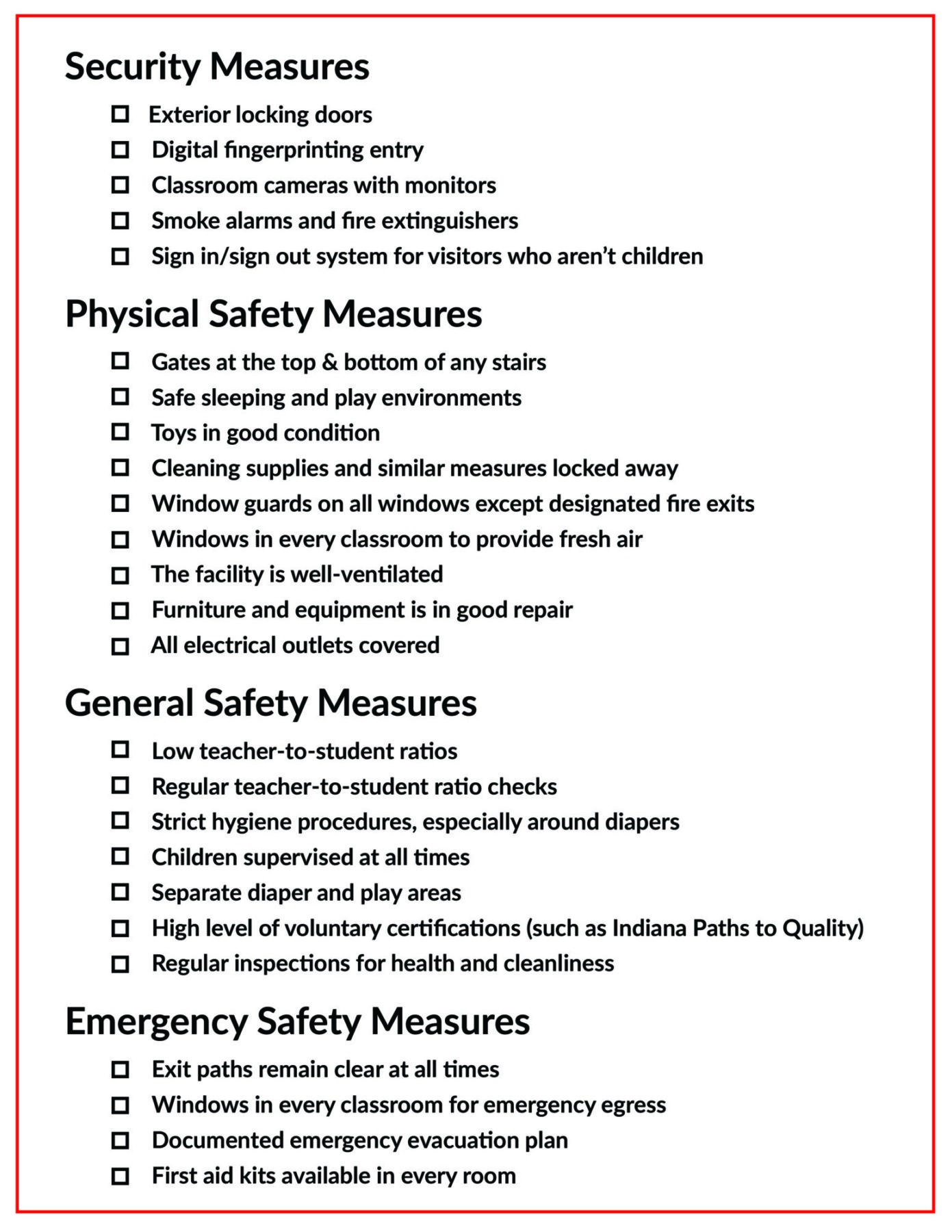
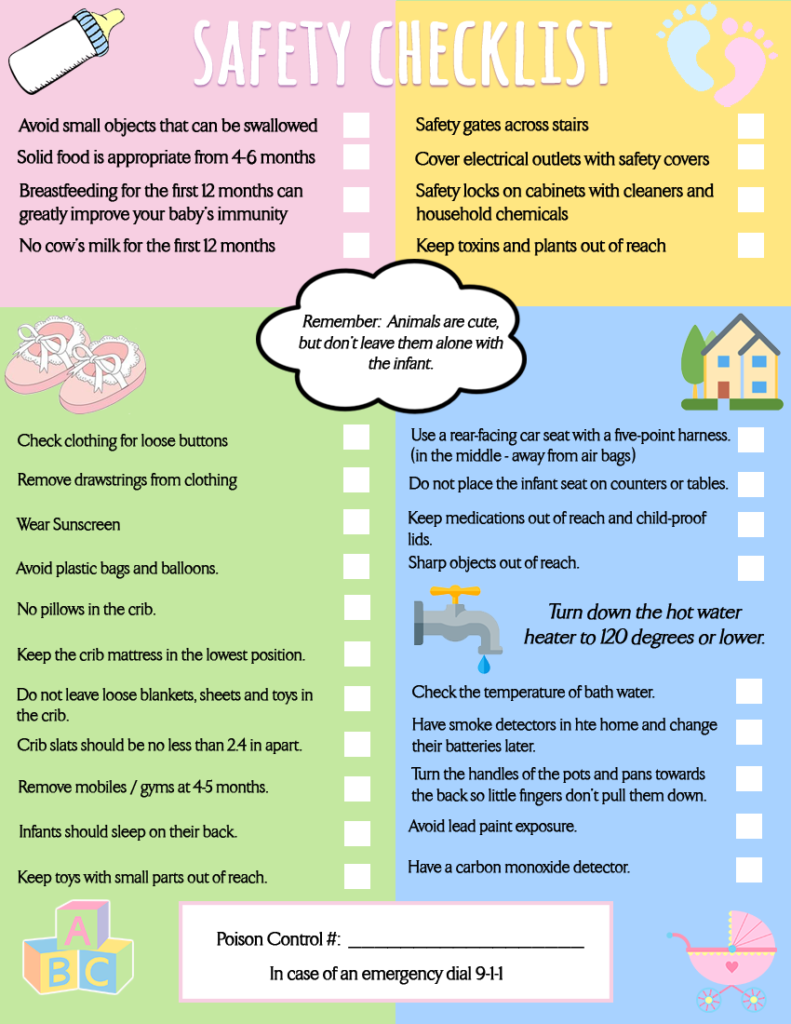
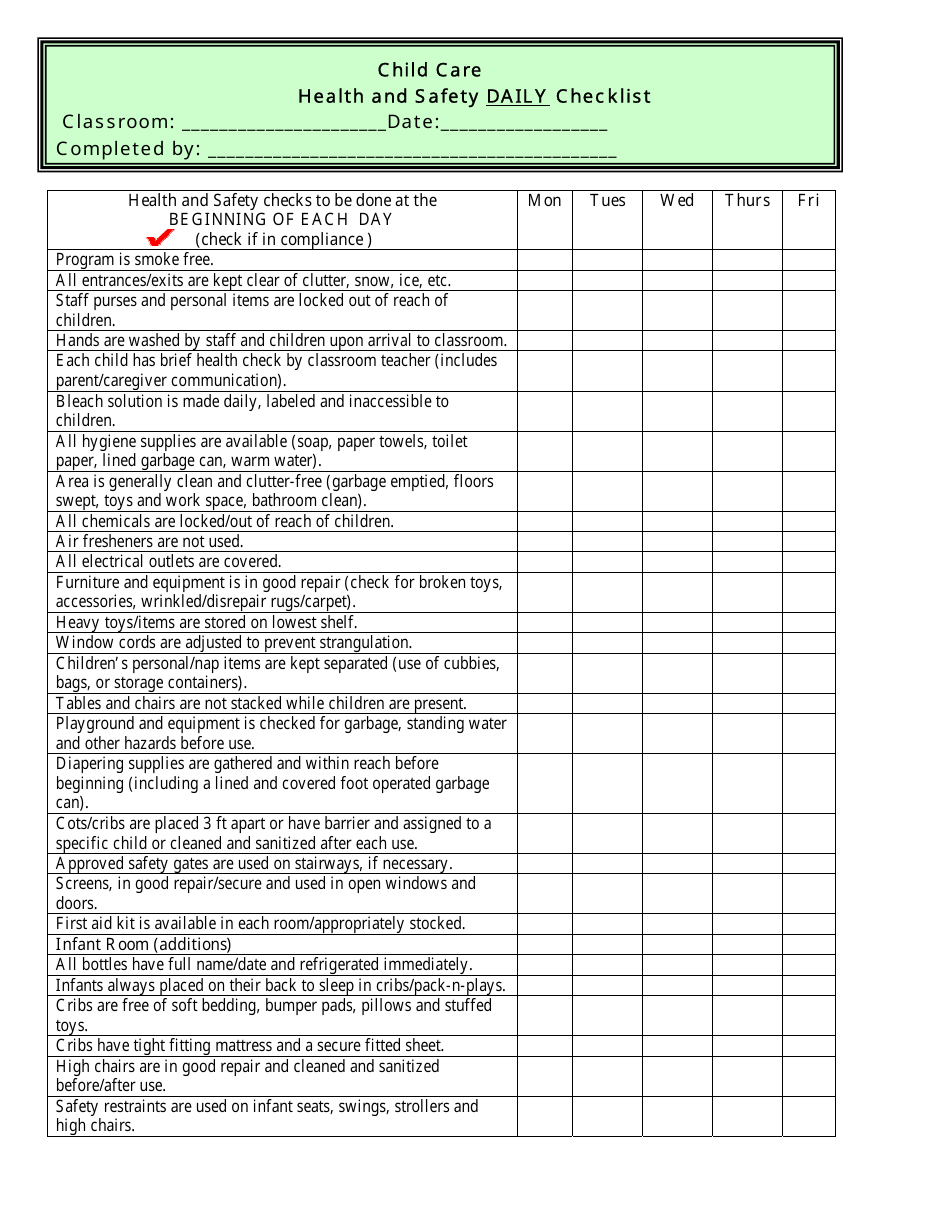
When Should You Use a Children Safety Checklist?
A children’s safety checklist should be utilized regularly to ensure that safety measures are up-to-date and effective. Here are some instances where you should refer to your checklist:
- When moving to a new home or apartment
- Before a family vacation or trip
- When your child reaches a new developmental milestone
- After purchasing new furniture or appliances
- When a new sibling is born or introduced into the family
- After receiving new toys or gifts
- Before hosting playdates or sleepovers
- At the beginning of each season to address seasonal safety concerns
How to Create Your Children’s Safety Checklist
Creating your own children’s safety checklist is a straightforward process. Follow these steps to get started:
- Identify Potential Safety Hazards: Walk through your home and identify any potential safety hazards. This includes areas such as the kitchen, bathroom, living room, and outdoor spaces.
- Research Safety Guidelines: Research safety guidelines and recommendations for each area. This can be done through reputable sources such as the American Academy of Pediatrics or the National Safety Council.
- Create a Checklist: Using word processing or design software, create a checklist that includes all the safety measures you want to address. Organize the checklist by room or category for easy reference.
- Add Descriptions and Instructions: For each safety measure, provide a brief description and any necessary instructions. This ensures that anyone using the checklist understands what needs to be done.
- Print and Distribute: Once your checklist is complete, print multiple copies and distribute them to family members, caregivers, and anyone else who may need it.
Sample Children Safety Checklist
Here’s an example of what a children’s safety checklist could look like:
1. Childproofing the Home
Childproofing your home is essential to prevent accidents and injuries. Take the following steps to childproof your home:
2. Safe Sleep Practices
Creating a safe sleep environment is crucial for your child’s well-being. Follow these guidelines to ensure safe sleep practices:
3. Safe Bathing and Toileting
Bath time can be a fun and relaxing experience, but it’s important to prioritize safety. Here’s how to ensure safe bathing and toileting:
4. Fire Safety
Fire safety is a critical aspect of keeping your children safe. Take the following precautions to prevent fires and prepare for emergencies:
5. Water Safety
Water can be a source of enjoyment and relaxation, but it can also pose risks. Follow these guidelines to ensure water safety:
6. Stranger Danger
Teaching your children about stranger danger is essential for their safety. Here’s how to educate them on staying safe:
7. Internet Safety
In today’s digital age, internet safety is more important than ever. Follow these guidelines to ensure your child’s online safety:
8. Emergency Contacts
Having quick access to emergency contacts is essential in case of an emergency. Keep a list of important phone numbers, including:
9. First Aid and CPR
Knowing basic first aid and CPR can be life-saving in emergencies. Familiarize yourself with these techniques:
10. Car Safety
Car safety is crucial when traveling with children. Follow these guidelines to ensure your child’s safety in the car:
Download the Checklist Template!
A children’s safety checklist is a valuable tool that helps you prioritize your child’s safety in various environments. By creating and regularly reviewing your checklist, you can ensure that you haven’t overlooked any important safety measures.
Use this comprehensive guide to create your checklist and keep your kids safe at all times.
Children Safety Checklist Template Excel – Download